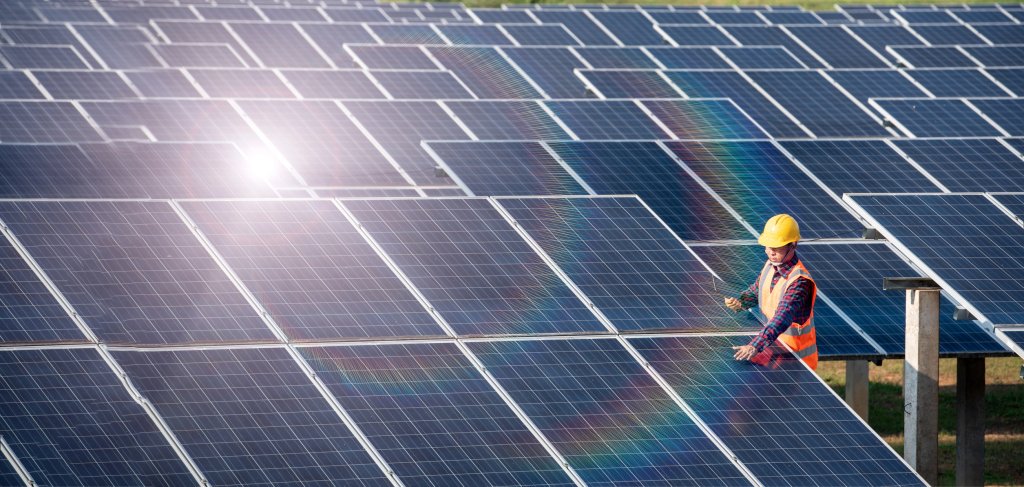East Kentucky Power Cooperative is planning to build solar installations in Fayette and Marion counties. The utility has not said if the newly announced federal financing will support this projects. (Getty Images)
A Kentucky electric utility serving more than 570,000 homes, farms and businesses across 89 counties is getting a federal funding boost to invest in renewable energy.
East Kentucky Power Cooperative (EKPC), based in Winchester, is one of 16 rural electric utilities across the country selected to receive a portion of $9.7 billion through the U.S. Department of Agriculture’s Empowering Rural America program (New ERA), made possible through the passage of the Inflation Reduction Act.
EKPC spokesperson Nick Comer in a statement said the nonprofit utility is finalizing a funding agreement with the USDA. Neither USDA or EKPC said how much financing the utility is in line to receive. Comer said most of the energy projects in the agreement will require approval by the Kentucky Public Service Commission (PSC), the state’s utility regulator.
“Federal New ERA funding will provide a major boost for EKPC to add renewable resources and reduce carbon dioxide emissions while keeping costs competitive for rural Kentucky residents,” Comer said.
President Joe Biden announced the funding during a visit to Wisconsin Thursday with Agriculture Secretary Tom Vilsack.
The program specifically targets rural member-owned electric cooperatives, and EKPC provides electricity to 16 electric cooperatives in the state. A USDA press release states EKPC will use the funding, the amount yet to be finalized, to “construct or procure” 757 megawatts of renewable electricity along with improving “the regional transmission grid to support renewable projects and increase energy efficiency.”
The USDA release states the investment will reduce pollution, including carbon dioxide emissions, by 2.3 million tons every year, equating to the pollution from 554,000 gasoline-powered cars annually.
EKPC proposed earlier this year to build two solar installations in Fayette and Marion counties generating a combined 136 megawatts of electricity, and it’s not immediately clear if New ERA program funding would be used for the installations. New ERA program applicants can seek grants, loans or a combination of the two with the award not to exceed $970 million for each applicant.
According to documents filed in April with the PSC, the two solar installations are set to be funded by both private and public bonds. Tom Stachnik, EKPC vice president of finance, in written testimony said the utility at that time was applying for New ERA program funding that “could result in additional favorable financing options.”
While EKPC has taken advantage of funding that federal officials say will result in a reduction of greenhouse gas emissions contributing to climate change, the utility is also supporting a legal challenge to federal regulations that seek to curb nearly all greenhouse gas emissions by 2032 from existing coal-fired power plants and new natural gas-fired power plants. The National Rural Electric Cooperative Association is among a number of plaintiffs including Kentucky Attorney General Russell Coleman that are challenging the regulations.
According to the utility’s annual report in 2023, EKPC sourced 59% of its electricity from burning coal. Coal is considered to be the worst emitter of greenhouse gasses compared to other electricity sources.
Appalachian Voices, an advocacy group pushing for clean energy and environmental protection across Appalachia, lauded the investments made through the New ERA program. But a representative of the group argued more needs to be done to move rural electric cooperatives away from fossil fuels.
“Rural electric cooperatives still rely heavily on inefficient, expensive fossil fuels that create pollution and harmful waste,” said Bri Knisley, director of public power campaigns at Appalachian Voices. “Even with this enormous investment, rural electric cooperatives still have tens of billions of dollars in need to help retire fossil fuel-based facilities and replace them with clean, sustainable energy.”

